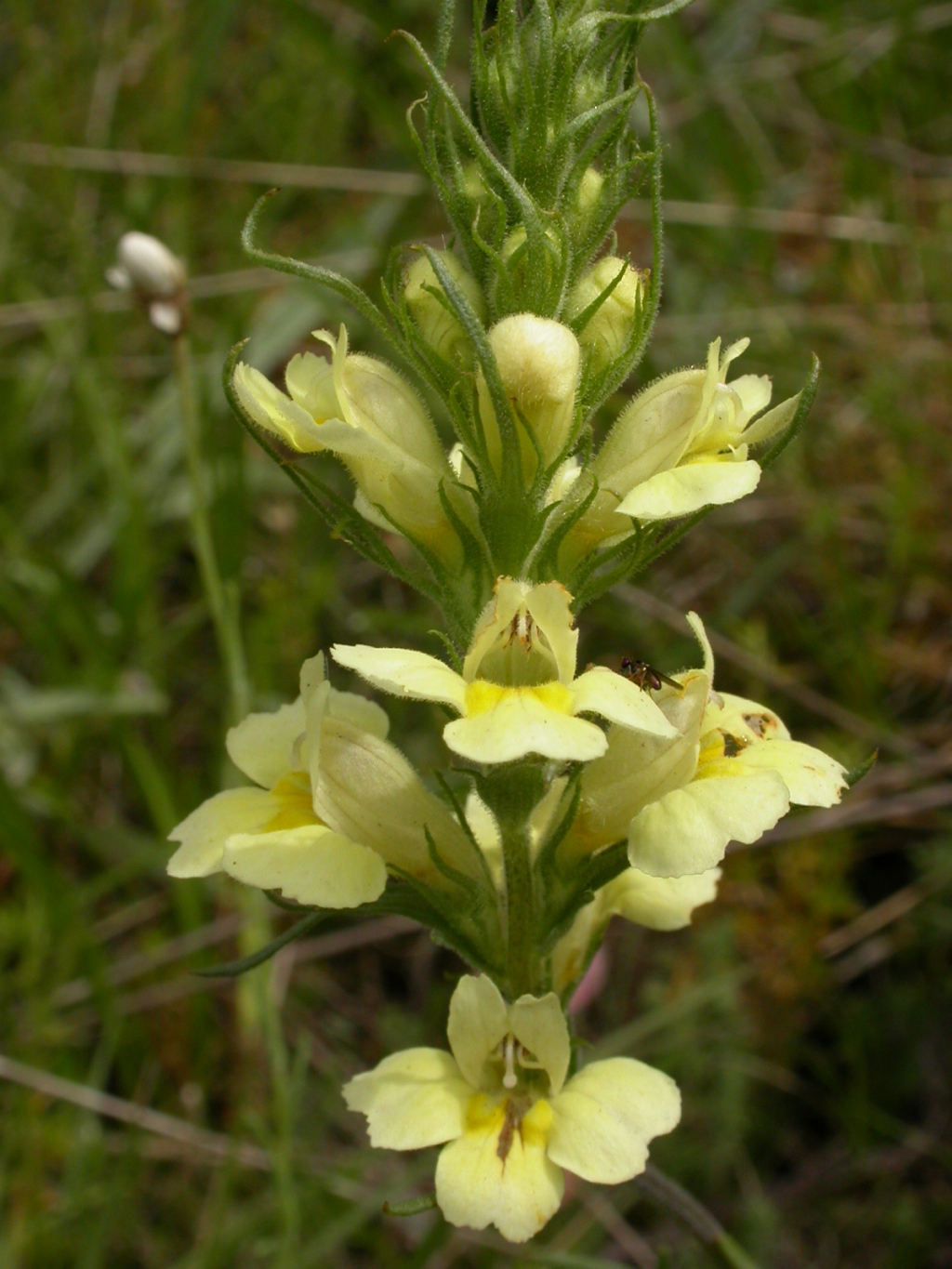Euphrasia scabra
R.Br. Rough EyebrightErect annual herb 8.5–50 cm high; branches developed in consecutive nodes, the oldest below inflorescence; branches leaves, bracts and calyces scabrous with coarse short eglandular hairs, with at least the calyx also glandular-hairy. Upper stem leaves ovate to elliptic, usually 6–20 mm long, 1–9.5 mm wide, pinnatifid to serrate-crenate with 1–5 pairs of teeth, base rounded-cuneate to truncate. Calyx 4.3–9 mm long; corolla 8–14 mm long, yellow, not striated; anthers 1.1–1.6 mm long, with area around connectives glabrous or hairy. Capsule 5–9.3 mm long, setose except at base. Flowers Oct.–Feb.
GleP, Brid, VVP, VRiv, GipP, OtP, WaP, Gold, CVU, NIS, EGL, EGU, HSF, HNF, OtR, MonT, HFE, VAlp. Formerly widespread, but not common, in lowland and montane regions throughout Victoria, this species is now threatened with extinction and confined to a few sites in the eastern ranges (e.g. Mt Koonika, Nunniong Plateau, Bendock areas). Observed in damp grassy situations, amongst shrubs, in sclerophyll forest, clearings or subalpine woodland.
Euphrasia scabra is polymorphic, with at least 2 taxa included under this name occurring in Victoria. Most plants belong to a scabrous small-flowered race (with affinities to E. orthocheila W.R. Barker of New South Wales), occurring in lowland to montane sites. The other race, with larger flowers and softer indumentum (approaching E. caudata), appears to be restricted to a single subalpine site near the Bogong High Plains.
Barker, W.R. (1999). Scrophulariaceae. In: Walsh, N.G.; Entwisle, T.J., Flora of Victoria Vol. 4, Cornaceae to Asteraceae, pp. 483–528. Inkata Press, Melbourne.
 Spinning
Spinning



